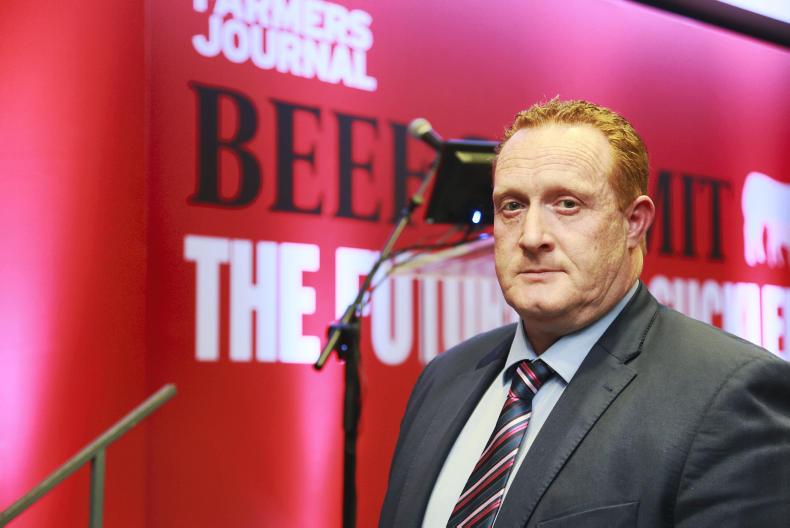The beef grid will be in place for 10 years this December and maybe it is time to look at reviewing it, Cormac Healy of Meat Industry Ireland told the Irish Farmers Journal Beef Summit in Galway on Thursday night.
“In December this year, the QPS will be in place for 10 years. It was an important step in rewarding quality from the better grading animals which come from the suckler herd.
“It brought greater differential into the pricing structure. However, when we look across the EU, differentials have moved on and maybe we need to do so too.
"We need to explore are changes possible," he said.
‘Premiumising’ Irish beef
He also said that Irish factories have made major progress on “premiumising” Irish beef and penetrating EU markets.
“This job is ongoing. In recent years too, some progress is now being made on access to important future international markets.
“The aim is to maximise the overall return from the market for Irish beef through finding the best outlets.
“We have moved from exports of frozen Irish beef as a commodity product and reliance of various market support mechanisms to a sector supplying fresh/chilled Quality Assured beef to some of the leading retail and food service chains across the UK and EU,” he said.
The “premiumisation” of Irish grass-fed beef is the goal, he said.
Cormac Healy of MII says Ireland produces 630,000t of beef and 590,000t of that is exported. #beefsummit pic.twitter.com/pH7q7RUwdQ
— Amy Forde (@amyforde6) May 9, 2019
Price
Healy said that he accepts that suckler enterprises need a margin to be sustained.
“Industry will be held to task on price delivery, but we are not in control of margins.
“The viability of the suckler enterprise is not solely about price – direct payments and enterprise efficiency and scale are also key elements of the equation,” he said.
Over the last five years, Healy said that the average R3 steer price was €4/kg.
“A decade ago, if we look at a similar five-year average the figure was €2.78/kg. As a percentage of EU-15 price, we have moved from 90-92% to an average over the last five years of 101%.
“We are operating on a higher price level due to the markets we have secured and the customers we are serving.
“Meeting market and key customer specifications has been critical to the progress made and will continue to be important if we are to extract more from our markets,” he said.
“The beef price has moved on in Ireland in the last decade, it has moved from 90% of the EU average to somewhere closer to 100% and over.” #beefsummit pic.twitter.com/jkuHLb0TiY
— Farmers Journal (@farmersjournal) May 9, 2019
Healy said that meat factories have had a very challenging six to eight months as a result of “exceptional market forces” such as Brexit, drought and increased kills across northern Europe.
“We can’t base everything on the last six months … we are starting to see some price recovery in recent weeks.
“Overall, progress has been made on price and the positioning of Irish grass-fed quality assured beef. This gives a good platform on which to build,” he said.
Dairy beef
Ireland’s factories process 1.6m to 1.8m head of cattle and Healy said that it has always been a mix of suckler and dairy-beef.
“Yes, the dairy-beef element has increased in recent years but suckler beef is very much part of the future for our sector.
“Suckler beef has and will continue to be an important part of our mix through our positioning of Irish beef as grass-fed beef in the market,” he said.






 This is a subscriber-only article
This is a subscriber-only article










SHARING OPTIONS: